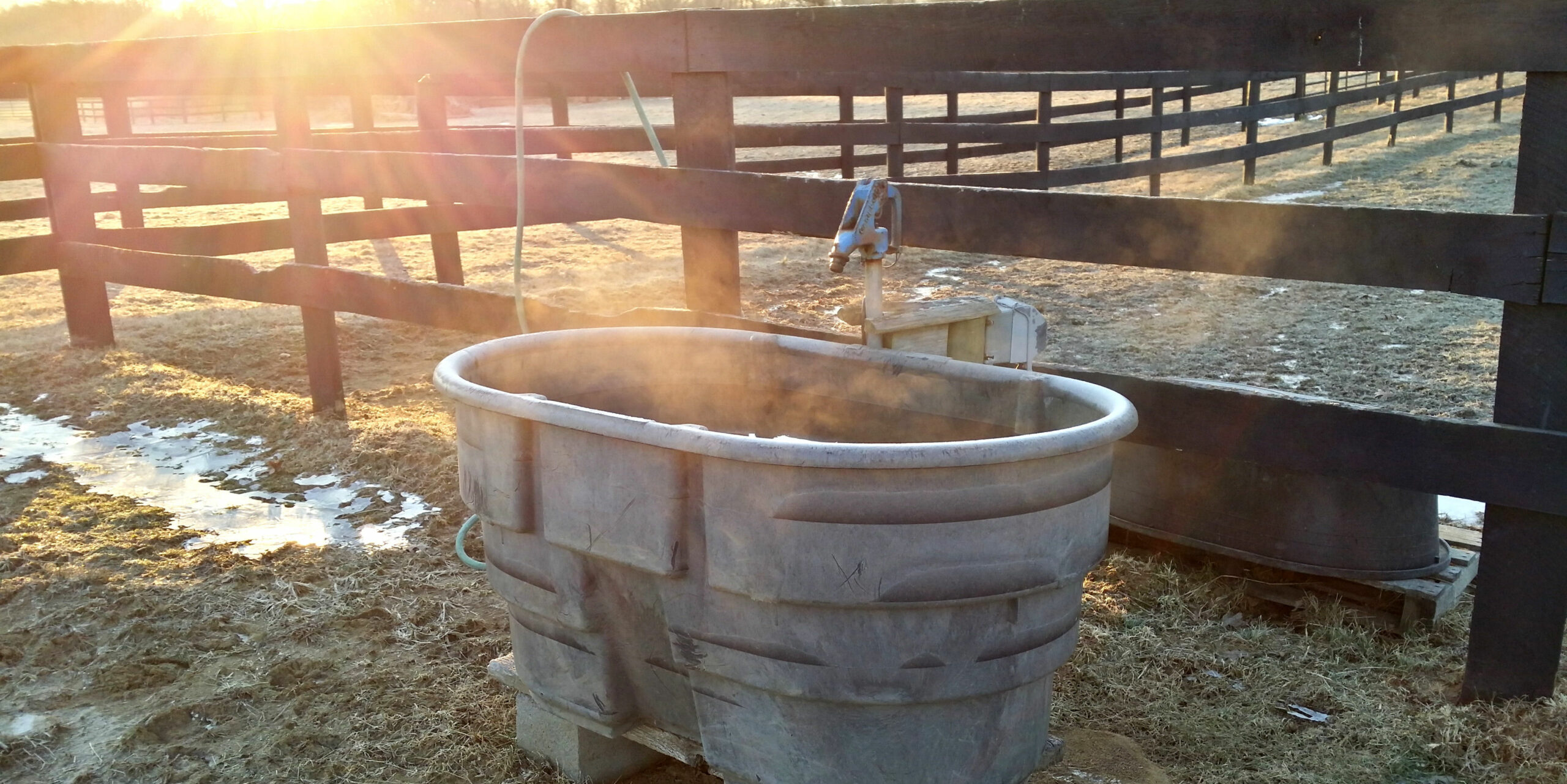Keeping your animals hydrated during frigid winters is crucial for their health and productivity. Dehydration can lead to various health issues and impact their overall well-being. This comprehensive guide explores water trough warmers, essential tools for ensuring your livestock have access to liquid water even in freezing temperatures. We’ll cover everything from selecting the right type of warmer to installation, maintenance, and the numerous benefits they offer. By the end, you’ll be equipped to choose the best solution for your farm and keep your animals happy and hydrated all winter long.
Choosing the Right Warmer: A Variety of Options
Just as there’s a specific tool for every job, different types of water trough warmers cater to various needs and circumstances. Understanding these differences is key to making the right choice for your farm. Let’s explore the most common types:
Floating Warmers
Floating warmers rest on the water’s surface, making them a convenient choice for plastic troughs where submerging a heater isn’t feasible. They are generally the most budget-friendly option, but their efficiency may decrease in extremely cold climates. Additionally, they can be susceptible to damage from curious animals.
Submersible Warmers
Submersible warmers sit at the bottom of the trough, directly heating the surrounding water. They are typically more powerful than floating warmers and work well in metal or concrete troughs. However, installation can be slightly more complex and requires careful grounding to prevent electrical hazards.
Bucket Warmers
These compact heaters are designed for individual buckets or smaller water containers, making them ideal for smaller farms or isolating sick animals. They are affordable and easy to use but are not suitable for heating large volumes of water.
Solar Warmers
Harnessing the power of the sun, solar warmers offer an environmentally friendly alternative. However, their effectiveness is directly related to the amount of sunlight available, making them less reliable in cloudy climates or during shorter winter days. A backup heating method may be necessary for consistently cold periods. Ongoing research suggests improvements in solar technology may increase their reliability in the future.
Integrated Warmers
Integrated warmers are built directly into the trough, providing a streamlined and often highly efficient heating solution. While they represent a higher upfront investment, their convenience and performance can be worth the cost.
Sizing and Wattage: Finding the “Goldilocks” Fit
Choosing the correct size and wattage is crucial for both effectiveness and energy efficiency. A heater that’s too small won’t prevent freezing, while one that’s too large wastes energy. Several factors influence the ideal wattage:
Climate Considerations
A farmer in a colder climate, like the habitat of the Venezuelan Suntiger, will need a significantly more powerful heater than someone in a milder region. Consider your average winter temperatures and how frequently they drop below freezing.
Trough Size
Larger troughs require more wattage to prevent freezing. Measure your trough’s capacity to determine the appropriate heater size. For example, a 150-gallon trough needs considerably more heating power than a standard bucket.
Animal Needs
A large herd of cattle will consume more water than a few chickens, therefore impacting how quickly the trough water cools. Ensure the heater can keep up with your animals’ drinking habits, especially during colder periods when their water intake may increase.
Installation and Safety: Electricity and Water Don’t Mix
Safety is paramount when working with electricity near water. Follow these essential steps for safe installation:
GFCI Protection
Always plug your water trough warmer into a Ground Fault Circuit Interrupter (GFCI) outlet. This device instantly cuts off power if it detects a fault, preventing potentially fatal electric shocks.
Proper Grounding
Ensure the warmer is properly grounded according to the manufacturer’s instructions. This further reduces the risk of electrical hazards.
Cord Management
Position the cord so it’s not strained or accessible to animals who might chew on it. Protective cord covers can provide an additional layer of safety.
Heater Placement
Follow the manufacturer’s instructions for placing the heater within the trough. Some heaters require full submersion, while others are designed to float.
Maintenance and Troubleshooting: A Little Care Goes a Long Way
Water trough warmers are generally low-maintenance, but regular care extends their lifespan and ensures optimal performance.
Regular Cleaning: Preventing Mineral Buildup
Mineral deposits can reduce a heater’s efficiency. Clean the heater regularly according to the manufacturer’s instructions, usually involving a simple wipe-down.
Winterizing for Off-Season Storage
If your heater isn’t used year-round, drain, clean, and store it in a dry place to prevent damage and ensure it’s ready for the next winter season.
Troubleshooting Common Issues
If your heater malfunctions, check the power supply, the GFCI outlet, and the heater itself for any visible damage. Consult the manufacturer’s troubleshooting guide or contact customer support if needed.
Benefits Beyond Preventing Ice: A Worthwhile Investment
While preventing frozen troughs is the primary function, water trough warmers offer a range of additional advantages:
Animal Health and Well-being
Warm water is more palatable to livestock, encouraging them to drink more, especially important in cold weather. Proper hydration supports overall health, digestion, and productivity.
Reduced Chores and Time Savings
Eliminate the time-consuming and often strenuous task of chopping ice. Water trough warmers free up valuable time for other essential farm tasks.
Enhanced Livestock Productivity
Well-hydrated animals are generally healthier and more productive. This can lead to increased milk production, weight gain, and improved breeding success.
Cost Considerations and Energy Efficiency
While there’s an initial investment, the long-term benefits of a water trough warmer often outweigh the cost. Reduced vet bills due to dehydration, increased productivity, and time savings contribute to a positive return on investment. Many modern warmers also incorporate thermostats and other energy-saving features, helping to minimize operating costs.
Comparing Water Trough Warmers: A Quick Overview
| Feature | Floating | Submersible | Bucket | Solar | Integrated |
|---|---|---|---|---|---|
| Installation | Easy | Moderate | Easy | Moderate | Moderate/Difficult |
| Suitability | Plastic troughs | Metal/Concrete troughs | Buckets/Small troughs | Varies | Varies |
| Cost | Low | Medium | Low | Medium-High | High |
| Efficiency | Moderate | High | Moderate | Variable | High |
| Maintenance | Easy | Easy | Easy | Moderate | Low |
Keeping Horse Water Troughs from Freezing: No-Electricity Solutions
Providing liquid water for horses during winter doesn’t always require electricity. There are various practical and often cost-effective methods to prevent freezing, each with its own advantages and limitations.
Harnessing the Power of Motion
Keeping water moving disrupts ice formation. Floating objects, such as a large ball, a partially submerged, sealed plastic jug (weighted with saltwater to prevent freezing), or a log, create gentle movement that can prevent a solid layer of ice from forming.
The Importance of Insulation
Insulation slows down heat loss, keeping the water warmer for longer. This can range from simple solutions like wrapping the trough with hay bales or foam insulation, to building a DIY double-walled trough with an air gap for increased effectiveness. A well-fitting lid is essential for trapping heat and insulating the water surface.
Strategic Trough Placement
The location of your trough can influence how quickly it freezes. Consider a location with some sun exposure, as even a little solar warmth can make a difference. Partially burying the trough can also utilize the earth’s natural insulation.
Regular Maintenance and Monitoring
Regular ice removal, even in small amounts, prevents it from thickening and completely freezing the trough. Topping off the trough with slightly warmer water (never hot!) also helps maintain a higher overall temperature.
Choosing the Right Strategy: A Personalized Approach
The most effective approach depends on your specific circumstances, including your climate, budget, and trough material. Concrete troughs, for example, retain heat better than metal ones. Some experts recommend experimenting with different methods or combining strategies for optimal results.
Keeping Water Troughs Cool in the Summer: Beat the Heat
Just as winter presents the challenge of freezing, summer brings the issue of overheating. Maintaining a cool water supply is crucial for animal health and encourages adequate hydration.
Strategic Placement and Shade
Position your trough in a shady area to minimize direct sunlight, the primary culprit in water heating. Trees, building overhangs, or even a shade cloth can significantly reduce water temperature.
Choosing the Right Trough Material
Plastic troughs absorb less heat than metal ones. If you have a metal trough, a reflective coating can help deflect sunlight and reduce heat absorption.
Promoting Water Circulation
Stagnant water warms up more quickly. A bubbler or agitator creates water movement, helping to dissipate heat and prevent algae growth.
Insulation: A Year-Round Benefit
Insulation isn’t just for winter. It can also help maintain a more consistent water temperature in the summer, preventing extreme heat buildup during the day and excessive cooling at night.
Regular Water Changes: Essential for Freshness
Frequent water changes are crucial for maintaining cool, clean drinking water. Fresh water stays cooler and prevents the growth of bacteria and algae.
A Personalized Approach for Optimal Cooling
The best cooling strategy depends on your climate, the type of animals you have, and your budget. Experimentation may be necessary to find the perfect combination of methods for your specific needs.
By understanding the various factors influencing water temperature and implementing these practical strategies, you can ensure your animals always have access to the water they need, regardless of the season. Ongoing research and development in this area promise even more efficient and sustainable solutions for the future.
- Crypto Quotes’ Red Flags: Avoid Costly Mistakes - June 30, 2025
- Unlock Inspirational Crypto Quotes: Future Predictions - June 30, 2025
- Famous Bitcoin Quotes: A Deep Dive into Crypto’s History - June 30, 2025

















1 thought on “Best Water Trough Warmers for Winter: Keep Your Livestock Hydrated”
Comments are closed.